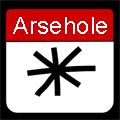or anyone else who might have something to say about the issue.
When you want to type an umlauted letter, how do you do it?
Just for laughs, I was playing around with the internationalisation settings on my new computer. (There is now a massive, 27", 2560x1440 monitor sitting on my desk.) The computer has what seems to be called a "US international" keyboard (sounds a bit contradictory, but whatever), but now certain keys are what appear to be called "dead keys". To type an umlauted letter, I type the " character, followed by the a, o, or u. Ä, Ö, Ü, ä, ö, ü. Ë and ë also seem to work, those are used in Russian (although not particularly useful if you don't have access to the rest of the Russian alphabet, all 33 letters). And I can even type naïve.
I can do â, ê, etc., á, à, ñ, and others. If I really want the `, ~, ˆ, ', or ", characters, I just type a space after them (or apparently any other key which isn't a proper certified combination).
Haven't figured out how to do an esszet yet.
I know a German keyboard has the "y" and "z" keys reversed relative to an English one, but I don't remember how the umlauted characters were handled. How do you type them?
I'm thinking about leaving my computers set in German, because before, I always found myself having to use "cut and paste" for all these characters which appear in German, Spanish, French, etc. (usually in names).
Can't figure out how to do that funny "c" with a little squiggle underneath, which is found in French and in Portuguese (and maybe other languages).
Question for Arneb
6 posts
• Page 1 of 1
Question for Arneb
They call me Mr Celsius!
-

Мастер - Moderator

- Злой Мудак
- Mauerspecht
- Posts: 23935
- Joined: Tue Aug 02, 2005 2:56 pm
- Location: Far from Damascus
Re: Question for Arneb
The umlauted letters have their own keys on a German type keyboard: ü to the right of p, ö to the right of l, ä to the right of ö. ß is to the right of zero.
For the others ß (=sz, or esszet if spelled) is a conglomerate consonant which derives its form from the Germanic type system (the blocky, craggy one called Fraktur, which you see in Nazi films) letters for s and z. It denotes a sharp, unvoiced s after a long vowel - a simple s would often sound like a z sounds in English, hence the different letter. If you want to approximate it on your keyboards, type a lower case Greek beta.
Seehere.
It is a tradeoff - things like @~\}][{ are all on AltShift combination keys, as is the Euro symbol,€.
For the others ß (=sz, or esszet if spelled) is a conglomerate consonant which derives its form from the Germanic type system (the blocky, craggy one called Fraktur, which you see in Nazi films) letters for s and z. It denotes a sharp, unvoiced s after a long vowel - a simple s would often sound like a z sounds in English, hence the different letter. If you want to approximate it on your keyboards, type a lower case Greek beta.
Seehere.
It is a tradeoff - things like @~\}][{ are all on AltShift combination keys, as is the Euro symbol,€.
Non sunt multiplicanda entia praeter necessitatem
-

Arneb - Moderator

- German Medical Dude
- God of All Things IT
- Posts: 70074
- Joined: Thu Nov 23, 2006 8:22 pm
- Location: Potsdam, Germany
Re: Question for Arneb
Arneb wrote:The umlauted letters have their own keys on a German type keyboard: ü to the right of p
OK, on this one (different computer than before, but it is working quite similarly), that position has a key with [ and { (the latter occurring with shift).
Arneb wrote:ö to the right of l
That has ; and :.
Arneb wrote:ä to the right of ö
That has ' and ".
Arneb wrote:ß is to the right of zero.
That has - and _.
I suspect quite a lot of the punctuation is also in different places.
Arneb wrote:For the others ß (=sz, or esszet if spelled) is a conglomerate consonant which derives its form from the Germanic type system (the blocky, craggy one called Fraktur, which you see in Nazi films) letters for s and z. It denotes a sharp, unvoiced s after a long vowel - a simple s would often sound like a z sounds in English, hence the different letter. If you want to approximate it on your keyboards, type a lower case Greek beta.
Like my keyboard has a Greek beta :)
I cannot easily get letters in Croatian, which may seem like a small thing, but I have two people with whom I correspond on a regular basis, with funky Croatian letters in their names . . .
But, I have poked around a bit more, and it seems my newfound ability to type things like á and ä easily has nothing to do with setting the system language to German - it comes from setting the keyboard to "US international" instead of "US".
Figured out how to do a ç. Still can't manage an esszet.
They call me Mr Celsius!
-

Мастер - Moderator

- Злой Мудак
- Mauerspecht
- Posts: 23935
- Joined: Tue Aug 02, 2005 2:56 pm
- Location: Far from Damascus
Re: Question for Arneb
Dunno if this is going to help or hinder in anyway


A bus station is where a bus stops. A train station is where a train stops. On my desk, I have a work station.
If you are seeing an apparent paradox, that means you are missing something.
If you are seeing an apparent paradox, that means you are missing something.
-

tubeswell - Enlightened One

- Posts: 324866
- Joined: Sun Sep 19, 2010 11:51 am
- Location: 129th in-line to the Llama Throne (after the last purge)
Re: Question for Arneb
Doesn't seem to do much on this computer (Mac OS X). I wonder if these codes are Windows-specific.
Croatian letters š and ć not in the chart (at least not that I noticed).
ETA - actually, the upper-case version of š is included.
Croatian letters š and ć not in the chart (at least not that I noticed).
ETA - actually, the upper-case version of š is included.
They call me Mr Celsius!
-

Мастер - Moderator

- Злой Мудак
- Mauerspecht
- Posts: 23935
- Joined: Tue Aug 02, 2005 2:56 pm
- Location: Far from Damascus
Re: Question for Arneb
I just use the "alt + number" codes when I'm using Windows. It is a bit of a bugger when I use my iPad and keyboard (like just know) but I rarely have to other than place names in articles and that is what editors are for. 
Get it up ye.
-

Heid the Ba - Enlightened One

- Tree hugging, veggie, sandal wearing, pinko Euroweasel
- Mr. Sexy Ass
- Posts: 107594
- Joined: Wed Aug 02, 2006 12:20 pm
- Location: Edinburgh, Scotland
6 posts
• Page 1 of 1
Return to Computers and Gadgets
Who is online
Users browsing this forum: No registered users and 1 guest
